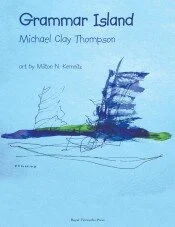On this page: Vocabulary | Language Terms | History of English
vocabulary
📚 Vocabulary from Classical Roots from Educators Publishing Service. This Grade 4-11 program provides "strategic vocabulary instruction from Greek and Latin roots." Start with Books 4–6, then proceed to Series A–E. This is a good, meaty program that combines vocabulary instruction with etymology, spelling, creative writing, a dab of Classical History, and more. Check out the Program Overview on the publisher's website for more details. – All
📚 English from the Roots Up by Joegil Lundquist. This two-volume series uses flash cards to teach common Greek and Latin root words. "It will help your child build vocabulary and comprehension, as well as figure out unknown words by deciphering their roots, prefixes, and suffixes." Either purchase the books and have your child make the flash cards (as the authors recommend) or purchase the flash cards sold separately through Amazon. There is a lot of overlap between the flash cards and books, and the introductory material for the book can be read on the free Amazon book sample. A good resource for students of all ages. – All
📚 MCT Language Arts by Michael Clay Thompson. If you're looking for a work-intensive, all-in-one Language Arts curriculum, then this program may be for you: "These exciting and demanding books are phenomenally successful both as stand-alones and as part of a longer term, progressive English Language Arts curriculum." At the core of the program is the grammar series, but the full curriculum interweaves vocabulary, poetics, writing, and literature. Levels 1-7 cover Elementary and Middle School Language Arts. – Elementary • Middle
📖 Vocabulary Cartoons, SAT Word Power by Bryan Burchers and Sam Burchers, Jr. "Welcome to the world of humorous cartoons that introduce proven mnemonic memory techniques into the vocabulary learning experience." Each example shows the vocabulary word, its definition, a similar sounding linking phrase, a humorous cartoon, and sentences that use the new word. This is a good purchase for middle or high school students who want to expand their vocabulary and have fun doing it. Also see Vocabulary Cartoons II. –Middle • High
📖 Merriam-Webster’s Elementary Dictionary. A children’s dictionary is a must-have resource for homeschooling families, and Merriam-Webster’s newly updated Elementary Dictionary is an excellent option. The extensive front material clearly explains how to use a dictionary, while the actual dictionary is greatly enhanced by illustrations, photos, sample sentences using quotes from children’s literature, “World History” blurbs that explain the etymology of selected words, and more. – Elementary • Middle
📖 The Right Word: Roget and His Thesaurus by Jen Bryant and Melissa Sweet. This 2015 Caldecott Honor Book tells the story of the shy inventor and wordsmith, Peter Roget, best known for writing the eponymous thesaurus ("treasure house") that bears his name. This is a lovely, lyrical, artistic picture book. – Elementary
📖 Noah Webster & His Words by Jeri Chase Ferris. Here's a charming picture book biography of Noah Webster, the Revolutionary Era scholar, famous for compiling America's first dictionary. – Elementary
language terms
This collection of entertaining picture books will help your child explore key literary terms and concepts: homophones, homonyms, compound words, oxymorons, alliteration, personification, hyperbole, onomatopoeia, idioms, maxims, similes, and metaphors.
📖 The Great Dictionary Caper by Judy Sierra. This book offers plenty of wordplay along with a fun visual introduction to some important language terms, such as onomatopoeia, homophones, antonyms, action verbs, interjections, anagrams, and palindromes. – Elementary
📖 Rattletrap Car by Phyllis Root. Here is a fine introduction to onomatopoeia for young children."Phyllis Root’s wonderfully inventive wordplay and Jill Barton’s spirited, expressive illustrations make this a read-aloud road trip to remember." Also see Root's Creak, Said the Bed. – Preschool • Elementary
📖 City Lullaby by Marilyn Singer. "Rhythm, rhyme, and lots of noisy onomatopoeia from premier children's poet Marilyn Singer, coupled with chaotic, colorful art from an acclaimed European illustrator, make this a rowdy read-aloud, with plenty of things to find and count on every spread."Or check out Robert Burleigh’s similarly-themed Clang! Clang! Beep! Beep! – Preschool • Elementary
📖 The Listening Walk by Paul Showers. "We're going on a listening walk. Shhhhh. Do not talk. Do not hurry. Get ready to fill your ears with a world of wonderful and surprising sounds." Listen for the many examples of onomatopoeia. – Preschool • Elementary
📖 Dear Deer: A Book of Homophones by Gene Barretta. In a letter to her Dear Deer, Aunt Ant cleverly describes the interesting animals that she sees in her new home at the zoo. Simple and silly, this is a fun first introduction to homophones. – Preschool • Elementary
📖 Did You Say Pears? by Arlene Alda. This short book plays around with homonyms and homophones through brief text and paired photographs (i.e. fingernails and carpentry nails). A fine resource to borrow from the library. – Preschool • Elementary
📖 Yaks Yak: Animal Word Pairs by Linda Sue Park. Here’s a fun, playful introduction to homonyms from Linda Sue Park. Watch a pair of yaks yak and a couple of flounders flounder. The end material gives etymological information on each word pair. – Preschool • Elementary
📖 Once There Was a Bull ... Frog by Rick Walton. Meant to be read aloud, this humorous little book tells the story of a bull ... frog who has lost his hop. Walton uses clever, deceptive illustrations and simple prose in this introduction to compound words. Good for preschoolers and early elementary. – Preschool • Elementary
📖 Who Ordered the Jumbo Shrimp? by Jon Agee. From palindrome master Jon Agee comes a thoroughly entertaining introduction to oxymorons. – Elementary • Middle
📖 A Chocolate Moose for Dinner by Fred Gwynne. A young girl comically misunderstands her parents' use of figurative speech and homophones in this picture book classic. Also see The King Who Rained. – Elementary
📖 My Momma Likes to Say and others by Denise Brennan-Nelson. This book, along with its companions – My Daddy Likes to Say, My Teacher Likes to Say, and My Grandma Likes to Say – presents common idioms and maxims, alongside little blurbs that further explain the meaning and origin of the phrases. Cleverly illustrated. – Elementary
📖 My Best Friend is as Sharp as a Pencil by Hanoch Piven. A little girl comes up with some unusual similes to describe her family and friends in this cute little picture book. Also by the same author: My Dog is as Smelly as Dirty Socks. Neat illustrations. – Elementary
📖 There's a Frog in My Throat by Loreen Leedy. This is a busy but admirably comprehensive collection of animal idioms. The heavily illustrated pages list 440 animal-based idioms and their definitions. Also by Leedy: Crazy Like a Fox: A Simile Story. – Elementary
📖 You Are What You Eat by Serge Bloch. Here is another wonderful, witty, charmingly-illustrated introduction to idioms. Also see Bloch's companion books, Butterflies in my Stomach and Reach for the Stars. Highly recommended. – Elementary
📖 The Cat's Pajamas by Wallace Edwards. Here's the perfect book for introducing idiomatic expressions. A single sentence on each page introduces a common idiom; the text is accompanied by an illustration that literally interprets the figure of speech. For example, the sentence, "The Oasis Express was running late, so Camilla had to cool her heels," depicts a well-dressed camel with ice cream cones on her hooves. Edwards is a master of dry humor. Also see Monkey Business by the same author. – Elementary • Middle
📖 It Figures! Fun Figures of Speech by Marvin Terban. This brief chapter book introduces figurative language – similes, metaphors, onomatopoeia, alliteration, hyperbole, and personification – with plenty of examples. This is a good independent read for a middle schooler. Other good reads by Terban: Punching the Clock: Funny Action Idioms, Mad as a Wet Hen and In a Pickle. – Middle
📖 The Word Snoop by Ursula Dubosarsky. This “wild and witty tour of the English language” covers a lot of ground: learn about the invention of the alphabet, the peculiarities of English spelling conventions, punctuation, figurative speech, and much more. A fun and informative supplemental resource for your English language studies. – Middle
history of english
▶️ Where did English come from? from TED-Ed. "Claire Bowern traces the language from the present day back to its ancient roots, showing how English has evolved through generations of speakers." – All
▶️ Why is there a "b" in doubt? from TED-Ed. "Say the word "doubt" aloud. What is that "b" doing there? Does it have any purpose? Gina Cooke explains the long and winding history of "doubt" and why the spelling, though it seems random, is a wink to its storied past."
▶️ Making sense of spelling from TED-Ed. “What can spelling tell us about relationships between words? While spelling may sometimes seem random or unexpected, this lesson illuminates how peeling back the layers of spelling helps us understand the complex history and meaningful structure of words.” – All
▶️ Mysteries of vernacular from TED-Ed. Each short video in this excellent series explains the etymology of an English word (bewilder, quarantine, earwig, zero). To browse the playlist, click on the three horizontal bars in the top right corner of the embedded video below. – All

























